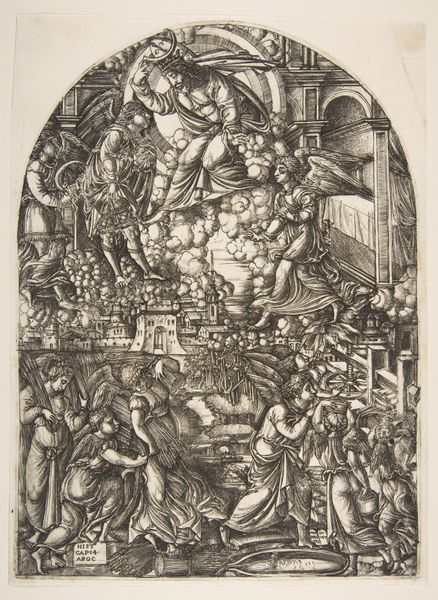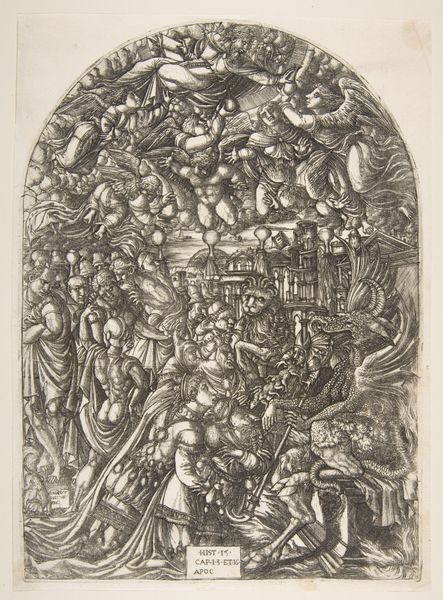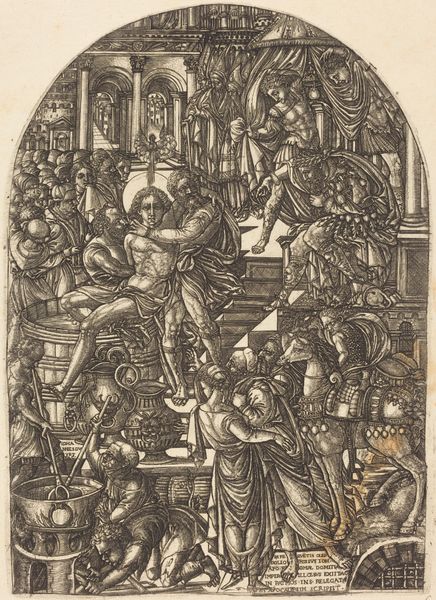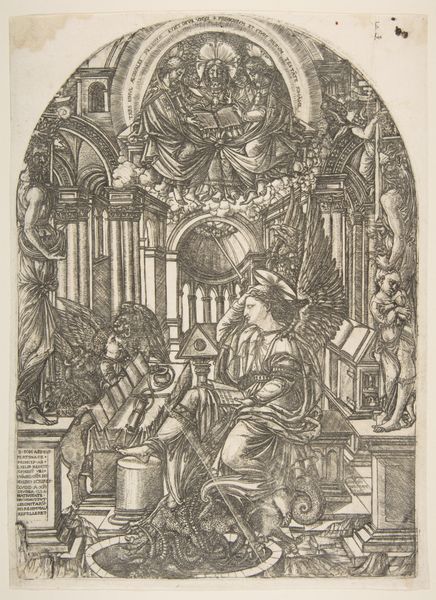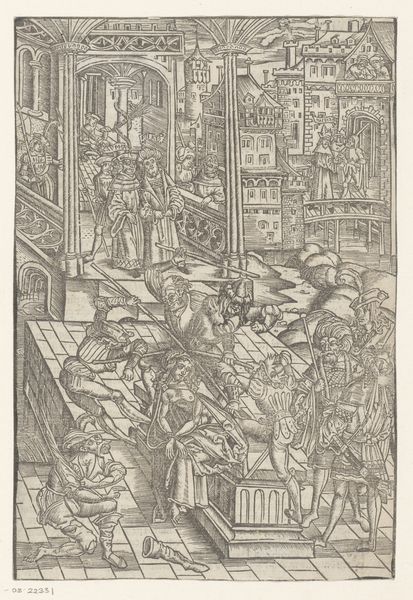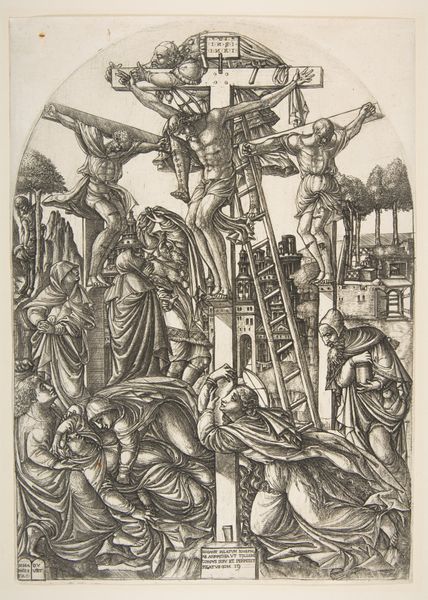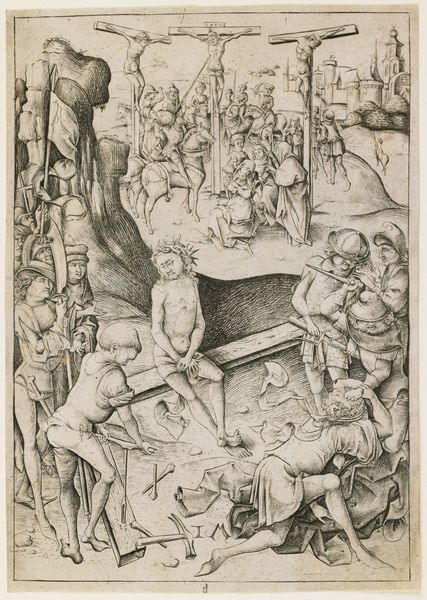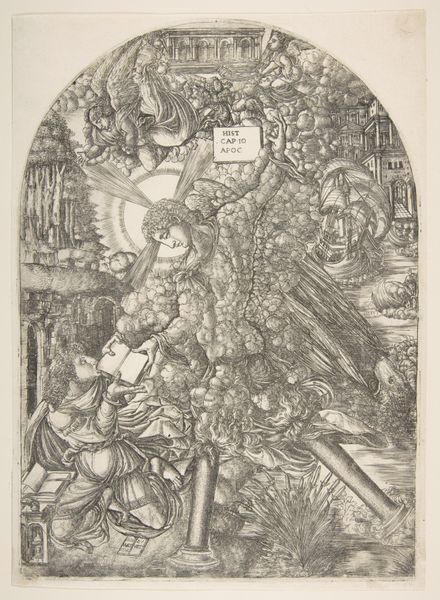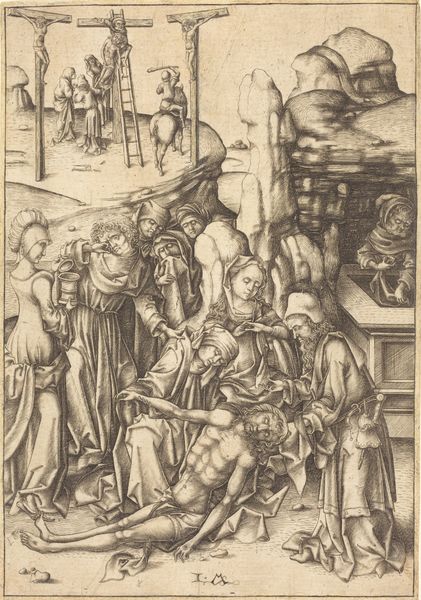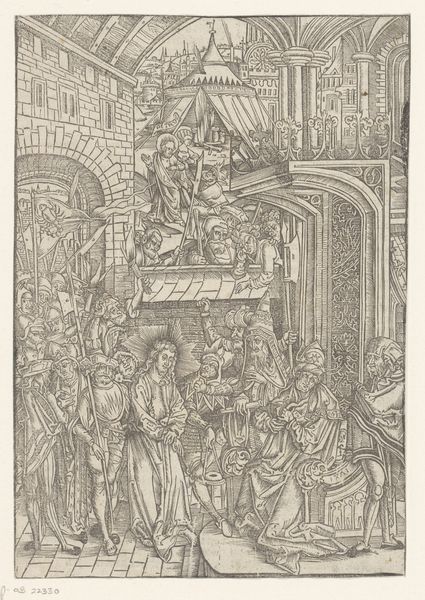
The Measurement of the Temple, from the Apocalypse 1480 - 1570
0:00
0:00
drawing, print
#
pen and ink
#
drawing
#
ink drawing
#
pen drawing
# print
#
pen sketch
#
ink drawing experimentation
#
pen-ink sketch
#
men
#
pen work
#
sketchbook drawing
#
sketchbook art
#
doodle art
Dimensions: plate: 12 1/16 x 8 3/4 in. (30.7 x 22.3 cm) sheet: 12 5/16 x 9 in. (31.3 x 22.9 cm)
Copyright: Public Domain
Editor: This is Jean Duvet’s "The Measurement of the Temple, from the Apocalypse," created sometime between 1480 and 1570. It’s an intricate print using pen and ink. I find the composition overwhelming, almost chaotic with so much happening at once. What stands out to you? Curator: The density is striking, isn't it? Duvet lived in a period of intense religious and political upheaval. Prints like this served a crucial public role, visually interpreting complex theological ideas for a wider audience, particularly as literacy rates were still relatively low. The “Apocalypse” was fertile ground, of course. Editor: So, the busyness wasn't a bug, it was a feature? To communicate with the public? Curator: Precisely! It's visual rhetoric. The sheer amount of detail, the drama of the figures, would have been designed to capture attention and convey the urgency and weight of the religious narrative. Think about the Reformation – how was visual culture employed to express beliefs and solidify group identities during the rise of print media? Where might this artwork have been displayed, and for whom? Editor: Okay, I see your point. Maybe the chaos reflects the tumultuous times, trying to reach as many people as possible, instead of alienating people with inaccessible high art. Were the buyers more diverse? Curator: Exactly. Understanding art from this period is like studying a form of visual language shaping and reflecting societal anxieties, hopes, and religious beliefs, influencing political will and collective identity. Print democratized access. Editor: That completely reframes how I see it. It's not just a complicated picture; it's a potent form of public communication during a pivotal moment in history! Curator: It certainly is! Thinking about its function reminds us that art is never created in a vacuum; it's part of a larger network of social, religious, and political forces. It also forces us to reconsider high versus low art when social and political messaging must overcome elitism.
Comments
No comments
Be the first to comment and join the conversation on the ultimate creative platform.
